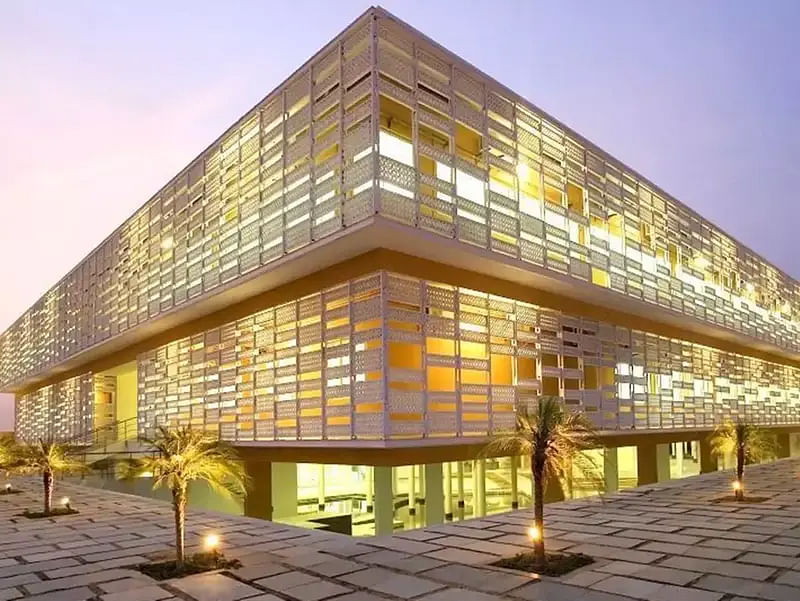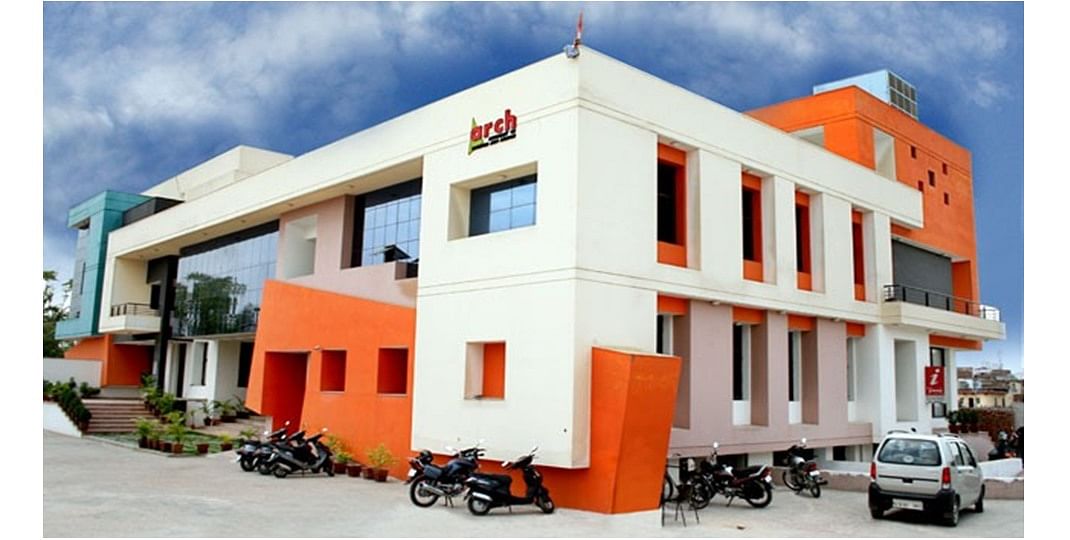Is being an Animator your dream career option? Check out the complete step by step process on how to become an Animator, Eligibility, Colleges, Skills Required and Salary in 2024.
An Animator is an artist who creates multiple images, or frames, which, when played in rapid succession, give the illusion of movement. Animators specialise in designing assets such as Traditional Animation, vector-based animation, 3D animation, motion pictures, and stop motions using various tools and software.
How to Become an Animator in India? To become an Animator, the aspirant must acquire a bachelor’s degree in Animation or Graphic Design, learn relevant skills, create a strong portfolio to work on various projects and land their dream job as an Animator. As per the Bureau of Labour Statistics, the employment rate for Animators is projected to grow at the rate of 6% between the year 2022-2032 with around 6,700 job openings every year.
The average Animator salary in India ranges from INR 4-9 LPA. (Source: AmbitionBox). As a fresher, the average animator's salary per month ranges from INR 30,000 - 45,000. With 3-5 years of experience, salary ranges from INR 6-12 LPA and the range can go up to INR 18 LPA with 5-10 years of work experience.
Table of Contents
- How to Become an Animator in India?
- How long does it take to become an Animator?
- Who is an Animator?
- What does an Animator do?
- Types of Animators
- Animator Salary in India
- Benefits of Becoming a Animator
How to Become an Animator in India?
Aspirants with a passion for arts, design and animation can start a successful career as an Animator in India by following a few steps such as gaining the relevant skills, education and experience. Listed below is the step-by-step guide on how to become an Animator in India:
- Step 1: Gain Required Artistic and Soft Skills
- Step 2: Fulfil Animator Education Requirements
- Step 3: Develop Technical Skills
- Step 4: Create a Portfolio
- Step 5: Apply for an Internship
- Step 6: Apply for Animator Jobs

Step 1: Gain Required Artistic and Soft Skills
The first step to becoming an Animator is to acquire and develop relevant skills such as a creative mind, strong visual imagination, drawing skills, observational skills, etc. Listed below are some of the important skills required for Animator.
|
Observation Skills |
Drawing Skills |
|
Attention to Detail |
Creativity |
|
Digital Skills |
Computer Literacy |
|
Artistic Ability |
Dedication |
|
Project Planning and Design |
Software Knowledge |
|
Time Management |
Character Design |
Also, Check: Animation Courses after 10th
Step 2: Fulfil Animator Education Requirements
Getting a bachelor’s degree in Animation or design such as B.Des, BA in Fine Arts, BSc in Animation and VFX, etc. can be the next step in kickstarting their career as an Animator. The course will help the aspirants learn about the basic terminologies, tools and techniques related to animation and design.
Listed below are some of the courses that a candidate can pursue to become an animator:
|
Animation UG Courses |
Duration |
Average Fees |
|
3 Years |
INR 10,000 - 1,50,000 PA |
|
|
3 Years |
INR 1,00,000 - 5,00,000 PA |
|
|
3 Years |
INR 5,000 - 2,50,000 PA |
|
|
3 Years |
INR 50,000 - 2,00,000 PA |
|
|
BDes in Animation |
3 Years |
INR 2,00,000 - 4,00,000 PA |
|
BA in Digital Filmmaking and Animation |
3 Years |
INR 50,000 - 5,00,000 PA |
|
BSc in Animation and Gaming |
3 Years |
INR 1,00,000 - 5,00,000 PA |
|
BSc in Animation and VFX |
3 Years |
INR 50,000 - 2,00,000 PA |
Read More: Animation Courses after 12th
Step 3: Develop Technical Skills
Candidates must enhance their technical skills such as drawing and composition, 3D Rendering, Animation Fundamentals, etc. to start a successful career in Animation. Listed below are some of the technical skills required to become an Animator:
- Storyboards: The candidate must be able to understand the mechanics of each animation and how different scenes form a video. This will also help them to create the assets and vector designated for each scene in the required sizes.
- Colour Theory: For any design and art professional, an understanding of colour theory plays a very important role in building their career. Animators generally work with colours to give the content a unique and attractive outlook and must know how different colour combinations work.
- Character Rigging: Animators are required to create a digital skeleton for characters and assets they might use in the video. Animators need to understand the character rigging or skeletal animation.
- Visual Effects: VFX or visual effects plays an important role in the field of animation industry and to create a competitive edge, the candidate must be able to apply visual effects and animations in the video or content they create.
- 3D Rendering: It is the process of creating 2D photos and illustrations from a 3D model. This plays an important role in various fields such as architecture, real estate, advertising, interior design, etc.
Step 4: Create a Portfolio
Once the candidate builds the skills required to become an animator, they should implement the learnings in various projects to create a strong portfolio. Working on real-time projects will help the candidates enhance their confidence in working with various software and tools.
Listed below are some of the important areas that can be added to an Animator Portfolio:
|
Real Life Drawing |
Object Drawing |
|
Animal Drawing |
Character Drawing |
|
Hand Drawing |
Layouts |
|
Storyboards |
Animation |
|
Personal Artwork |
Personal Projects |
Also, Check: List of Best VFX Courses in India
Step 5: Apply for an Internship
To land an Animator job, the candidate can further apply for an internship to gain experience and improve their hands-on skills. The job responsibilities of an animator intern include helping and coordinating with the team of animators and working on various projects.
Doing an internship program will also strengthen the portfolio of the candidate. They will also be involved in reading and understanding different types of storyboards. Candidates can get their hands on various paid software tools and software while working with a team of animators.
Step 6: Apply for Animator Jobs
The final step to becoming an Animator is to apply for jobs as a fresher by creating an impactful profile which includes all the necessary information such as education, experience, internships, etc. and a cover letter which describes the skills and knowledge the candidate has acquired. The average animator salary for an entry-level job ranges from INR 3.5 LPA. Listed below are some of the entry-level animator job positions and their salary details:
|
Animator Job Role |
Average Animator Entry-Level Salary |
|
2D Animator |
INR 3.9 LPA |
|
Junior Animator |
INR 4.2 LPA |
|
Layout Artist |
INR 3.7 LPA |
|
Junior Storyboard Artist |
INR 3.8 LPA |
|
Graphic Artist |
INR 3.6 LPA |
Also, Check: How to Introduce Yourself in an Interview
How Long Does it Take to Become an Animator?
To become an Animator in India, it typically takes around 3-4 years as the process includes learning the relevant skills and techniques, gaining formal animator requirements, building a portfolio and gaining work experience by doing personal projects and internships.
Some candidates may even spend an additional two years pursuing a master’s degree with a specialisation in graphic design, fine arts and illustration to enhance their knowledge and to create a competitive edge in the industry.
Who is an Animator?
The definition of an Animator is someone who works with art, illustrations, series of drawings and graphic design to produce a final output such as videos, 3D Models, 2D photographs, etc. An animator is a professional who works with industries such as Architecture, Real Estate, Advertising Agencies, Automobiles, commercials, etc.
Animators are artists who use various software and tools to create a series of images that stimulate movement in a sequence. They are generally skilled in bringing life to various storyboards and concepts through visually appealing animations and motion graphics.
What Does an Animator Do?
Animator responsibilities in an organization include creating storyboards, advertising campaigns, promotional videos, educational content, etc depending on the job designation and specialisation. Given below are some of the animator duties at the job:
- Animators are responsible for creating wireframes and designs that can stimulate motion with a sequence of images or frames
- Works with a team including art directors, graphic designers, game designers, etc to exchange their specialisation and ideas to bring a quality output
- Responsible for coordinating with the other team members such as SMEs, Instructional designers, graphic designers, etc to understand the requirements.
- Animators are responsible for creating 2D images from 3D models for various promotional and advertising activities in an organisation
Also, Check: Steps to Become a Graphic Designer
Types of Animators
When it comes to Animation videos and content, it goes through various stages such as storyboarding, motion graphics, assets, etc which involve various specialization from each animator. Given below are the types of Animators in India:
1. 2D Animators
2D Animators are artists who create 3D or 2D illustrations or images to create motion videos. They generally work with multimedia, television, educational content, social media posts, etc.
2. Character Animators
They are responsible for creating life live animation characters using various software tools such as Lightwave, flash, Visme, Adobe Animate, Biteable and Animaker to visualise and add motions in videos, films, cartoons, etc.
3. 3D Animators
3D Animators are artists who use computer programs and software to create 3D models in all possible angles that can be used in videos, images, etc. They are generally recruited by construction companies, architecture, and logistics companies as it requires various dimensions to every image that is being designed.
4. Motion Graphics Animators
Motion Graphics Animators focus on text as a major design and animation component in videos, text, films, etc wherever the motion is required to grab the user's attention. They generally work with explainer videos, information graphics, informational video content, etc.
5. Rigging Artist
Rigging Artists are often called skeletal artists as they work on creating the digital skeleton of characters that are used in videos and later add in the motion graphics to stimulate actions.
6. Stop Motion Animators
Stop Motion Animation is the animator's work with photographs or 3D models to physically manipulate their actions by adding a sequence of similar images often used in filmmaking, video games, digital content creation, etc.
Animator Salary in India
The average Animator salary in India ranges from INR 1.5 - 8 LPA based on domain knowledge and experience. The Animator's salary in India per month is around INR 40,000. The highest salary of an animator in India with atleast 3-5 years of experience can go up to INR 12 LPA. Listed below is the animator salary range based on job designation:
|
Animator Jobs |
Average Animator Salary |
|
Animation Technical Director |
INR 9.6 LPA |
|
Effects Technical Director |
INR 16 LPA |
|
3D Modeller |
INR 5.4 LPA |
|
Project Manager |
INR 17.7 LPA |
|
Character Animator |
INR 7.8 LPA |
Benefits of Becoming an Animator
Candidates need to understand the benefits of becoming an Animator in India which include a creative network, flexible timings, career progression, etc. Listed below are the benefits of becoming an Animator:
- Flexible Working Hours: Most of the hiring companies allow animators to work their flexible hours as the job roles involve creativity, logical thinking and imagination.
- Creative Expansion: The job role as an Animator helps the candidate to improve their creativity by connecting with like-minded people in the team and with various advancements and opportunities in the field.
- Career Progression: A career as an Animator has a lot of potential with an increase in the consumption of digital content and advancement in the designing and animation industry.
- High Demand: Animators are in demand due to the growing demand for entertainment content such as movies, games, videos, virtual content, etc.
- Job Security: With continuous learning and dedication, candidates can have an excellent career progression and job security in the field of animation and design
- Competitive Salary: With the demand for animators and the enhancement in animation and software tools, the job outlook and the salary range of animators is expected to grow exponentially in the coming years.





















POST YOUR COMMENT